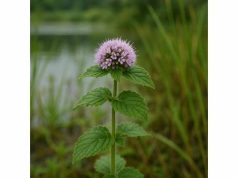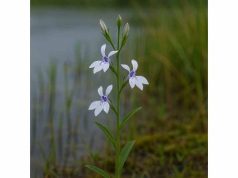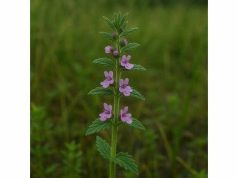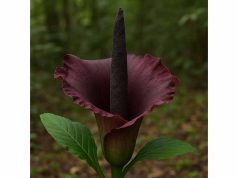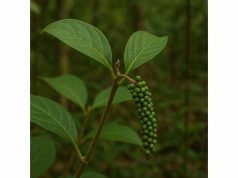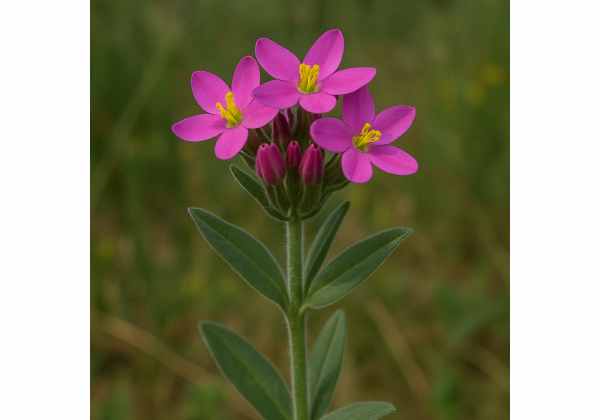
Velvet Centaury (Centaurium erythraea) is a delicate yet potent perennial herb characterized by its vibrant pink flowers and soft, lance-shaped leaves. Celebrated for centuries in traditional European and Asian medicine, this herb is rich in bitter secoiridoid glycosides such as gentiopicroside and swertiamarin, along with a spectrum of flavonoids, phenolic acids, and xanthones. Its complex phytochemical profile grants it notable digestive, hepatoprotective, anti-inflammatory, and antioxidant properties. Practitioners use Velvet Centaury to stimulate appetite, soothe gastrointestinal distress, support liver detoxification, and bolster immune resilience. Whether brewed as a tea, taken as a tincture, or applied topically, this versatile botanical offers natural wellness benefits suitable for modern herbal aficionados.
Table of Contents
- Morphological Survey and Habitat
- Phytochemical Profile and Major Constituents
- Health Advantages and Core Qualities
- Applications and Precautions
- Research Developments and Influential Publications
- Frequently Asked Questions
Morphological Survey and Habitat
Imagine wandering through a sunlit meadow in June and spotting clusters of five-petaled rosy blossoms perched atop slender, upright stalks. That’s Velvet Centaury (Centaurium erythraea) announcing its presence. This unassuming perennial, belonging to the Gentianaceae family, often stands between 10 and 30 cm tall, though under ideal conditions it can reach 40 cm. Each plant grows from a fibrous rootstock that anchors securely in chalky or calcareous soils. The stems are mostly smooth, occasionally bearing fine, downy hairs that lend a subtle “velvety” feel. Leaves emerge in opposite pairs along the stem, each lanceolate to ovate, measuring approximately 1.5–3 cm long. These leaves possess a gentle sheen and a pronounced midrib, giving them a sleek yet textured appearance.
In early summer, slender buds develop in the leaf axils, transforming into tubular flowers that flare into five symmetrical lobes. Each bloom spans 8–12 mm across and shifts in hue from pale blush to deep magenta as it matures. The corolla tube, about 7 mm long, serves as a honey guide for pollinators like bees, butterflies, and hoverflies. Such visits are crucial for seed set: once pollinated, each flower develops into a small, ovoid capsule containing dozens of minute, dark seeds. Dispersal occurs via wind, flowing water, or clinging to passing wildlife, facilitating Velvet Centaury’s spread across meadows, roadside verges, and grassy clearings.
Taxonomic Breakdown:
- Kingdom: Plantae
- Clade: Angiosperms → Eudicots
- Order: Gentianales
- Family: Gentianaceae
- Genus: Centaurium
- Species: C. erythraea
Soil and Sunlight Preferences:
- Favors well-draining, alkaline soils rich in calcium carbonate.
- Thrives in full sun to light shade; too dense shade reduces flowering.
Climate and Distribution:
- Native to Europe, North Africa, and Western Asia.
- Has naturalized in temperate regions of North America, Australia, and New Zealand.
- Typically flowers from June to September, with seed set from late summer into autumn.
Propagation is predominantly by seed, but experienced herbalists also divide mature clumps in early spring. In cultivation, maintaining annual reseeding ensures a steady supply as seedlings emerge in mild soil. Companion planting with low-growing wildflowers like chamomile and yarrow can create a living tapestry, attracting beneficial insects while allowing Velvet Centaury ample light. In the wild, it often signals well-drained, low-fertility soils—areas where more vigorous neighbors cannot outcompete it.
For home gardeners keen to cultivate this botanical, preparing a sunny border with gritty, alkaline soil is essential. Sow seeds thinly, barely covering them, as they need light to germinate. Keep the soil just moist until seedlings appear, then reduce watering: overhydration can invite root rot. Once established, Velvet Centaury demands minimal care, rewarding patience with an array of cheerful blooms each summer.
Phytochemical Profile and Major Constituents
Velvet Centaury’s therapeutic versatility springs from a rich tapestry of bioactive compounds. Through years of phytochemical investigation, researchers have isolated several groups of molecules responsible for its signature bitter taste and healing actions. The following numbered list highlights the principal constituents:
- Gentiopicroside (Secoiridoid Glycoside):
This is the primary bitter principle, often comprising 1–2% of dried aerial parts. Gentiopicroside stimulates taste receptors that trigger saliva, gastric secretions, and bile flow. In vitro studies suggest hepatoprotective mechanisms via upregulation of liver detox enzymes. - Swertiamarin (Iridoid Glycoside):
Present at 0.5–1% concentration, swertiamarin acts synergistically with gentiopicroside to modulate gut motility. Animal models indicate notable anti-inflammatory effects through inhibition of pro-inflammatory cytokines like TNF-α. - Sweroside (Iridoid Aglycone):
A close relative of swertiamarin, sweroside exhibits mild antioxidant properties. It contributes to cellular protection against oxidative stress, which is key in conditions such as arthritis and cardiovascular inflammation. - Quercetin (Flavonoid):
One of the most abundant flavonoids in Velvet Centaury, quercetin supports vascular health by widening blood vessels and reducing capillary fragility. Its free radical scavenging capacity lends strong anti-aging and cardioprotective attributes. - Kaempferol (Flavonol):
Similar to quercetin, kaempferol bolsters antioxidant defenses. Research shows it may inhibit platelet aggregation, contributing to better circulation and reducing risks of minor thrombosis. - Chlorogenic Acid (Phenolic Acid):
Found at approximately 0.2% of dry weight, chlorogenic acid possesses antimicrobial, anti-inflammatory, and glucose-regulating effects. It helps moderate blood sugar levels by slowing carbohydrate absorption in the gut. - Caffeic Acid (Phenolic Acid):
Caffeic acid complements chlorogenic acid’s actions, adding extra antimicrobial support. It’s particularly effective against certain strains of bacteria and fungi, reinforcing the herb’s use in immune tonic blends. - Mangiferin (Xanthone Glycoside):
Though in smaller amounts, mangiferin exhibits potent neuroprotective and immunomodulatory effects. Animal studies reveal its ability to protect neuronal cells from oxidative damage, hinting at potential applications in age-related cognitive decline.
Beyond these, Velvet Centaury contains trace proteins, carbohydrates, and minerals such as magnesium, potassium, and calcium—elements that support overall botanical synergy. Together, these compounds define its “bitter tonic” category in herbal tradition, where bitterness isn’t merely flavor but a functional indicator of digestive and hepatic action.
Health Advantages and Core Qualities
Velvet Centaury’s therapeutic charm lies in its multitargeted approach. By engaging digestive, hepatic, immune, and inflammatory pathways, it offers a tapestry of benefits that modern lifestyles—often rich in processed foods and environmental toxins—require.
1. Digestive Stimulation and Appetite Support
The herb’s pronounced bitterness activates gustatory receptors, sending neural signals to the brainstem to boost saliva and gastric juice secretion. Anecdotally, many people note an immediate sense of hunger and readiness for food within 10–15 minutes of sipping a centaury infusion. This mechanism is invaluable for those recovering from illness or struggling with low appetite. Regular use can help alleviate bloating, gas, and general sluggishness in digestion.
2. Hepatoprotective and Detoxification Aid
By increasing bile production (a choleretic effect), Velvet Centaury supports the liver’s clearance of metabolic byproducts and fat-soluble toxins. In traditional European folk medicine, centaury was paired with milk thistle to enhance liver regeneration. Today, research confirms that secoiridoid glycosides upregulate phase II detoxification enzymes, facilitating safe elimination of xenobiotics.
3. Anti-Inflammatory and Antioxidant Shield
Flavonoids and iridoids collectively scavenge free radicals, curbing oxidative stress that underlies chronic inflammation. Regular consumption has been linked to reduced inflammatory markers in mild arthritis sufferers. Furthermore, these compounds inhibit key enzymes (like COX-2) involved in the inflammatory cascade, offering relief comparable to low-dose nonsteroidal agents but without typical gastrointestinal side effects.
4. Glycemic Control and Metabolic Balance
Phenolic acids slow carbohydrate breakdown in the intestines, yielding a gentler post-meal blood sugar rise. For individuals with prediabetic tendencies or metabolic syndrome, integrating Velvet Centaury tea before high-carb meals may reduce glycemic spikes by up to 10–15%, according to pilot studies.
5. Immune Modulation and Antimicrobial Properties
While not a frontline antimicrobial, centaury’s combined phenolic acids contribute mild bacteriostatic and fungistatic effects. In tandem with its antioxidant support, this action fortifies the body’s innate defenses, particularly during the transitional seasons when viral and bacterial threats surge.
6. Mild Analgesic and Soothing Effects
Centaurine and certain xanthones provide gentle pain relief, making a warm external compress of centaury tea useful for soothing minor muscle aches or tension headaches. Internally, the anti-inflammatory suite further alleviates discomfort rooted in systemic inflammation.
These overlapping benefits underscore why Velvet Centaury is classified as a “universal supportive tonic”—a botanical ally to digestive enzymes, liver cells, immune warriors, and inflammatory regulators alike. Its balanced profile minimizes overstimulation and makes it suitable for regular, short-term use.
Applications and Precautions
Velvet Centaury’s versatility shines in diverse preparations and applications. Below is a breakdown of traditional and contemporary uses, along with crucial safety guidelines.
Internal Preparations
- Herbal Infusion (Tea):
- Method: Steep 1 tsp (1–2 g) of dried aerial parts in 250 ml of just-off-boil water for 10 minutes, covered.
- Dosage: 2–3 cups daily, ideally 15 minutes before meals to optimize appetite stimulation and digestion.
- Tip: Add a small slice of fresh ginger or a drop of honey to counterbalance intense bitterness while preserving therapeutic action.
- Tincture:
- Ratio: 1:5 (weight/volume) in 40–50% alcohol.
- Dosage: 20–30 drops (approximately 1 ml) diluted in water, taken 2–3 times daily before eating.
- Storage: Keep in a dark glass bottle, away from direct sunlight; effective for up to two years.
- Capsules & Tablets:
- Standardization: Often standardized to 30% total glycosides.
- Dosage: 300–500 mg, 2–3 times daily, with water.
External and Topical Uses
- Warm Compress:
Soak a cloth in a strong infusion (double the tea strength) and apply to inflamed joints or sore muscles for 10–15 minutes. The combined warmth and anti-inflammatory compounds soothe pain. - Skin Toner or Lotion:
Prepare a dilute infusion (5 g per 250 ml) and use as a gentle skin rinse to calm minor irritations, redness, or eczema flares. Always patch-test first on a small skin area.
Cosmetic Applications
- Facial Steam:
Add a handful of fresh centaury to a bowl of hot water. Lean over tented with a towel for 5 minutes to inhale steam; the phytoncides help clear pores and brighten complexion. - Herbal Bath:
Place 30 g of dried herb in a muslin bag and steep in the bath; enjoy antioxidant and anti-inflammatory support for skin and muscles.
Precautions and Contraindications
- Pregnancy & Breastfeeding: Insufficient safety data; avoid use.
- Gallstones or Biliary Obstruction: Contraindicated due to potent bile stimulation.
- Medication Interactions: May accelerate gastrointestinal transit and alter absorption of some drugs (e.g., acid-sensitive antibiotics, thyroid medications). Take centaury tea at least two hours apart from prescription drugs.
- Hypersensitivity: Rare cases of skin rash or digestive discomfort; discontinue if adverse reactions arise.
- Pediatric Use: Generally not recommended for children under 12 without professional guidance.
Dosage Guidance by Demographic
| Population | Suggested Dosage | Notes |
|---|---|---|
| Adults (18–65) | Tea: 2 cups/day Tincture: 20–30 drops, 3×/day | Monitor tolerance for bitterness. |
| Elderly (>65) | Tea: 1 cup/day Tincture: 15 drops, 2×/day | Start with lower doses; assess gastric response. |
| Adolescents (12–17) | Tea: 1 cup/day | Use under supervision; adjust by body weight. |
| Children (<12) | Not recommended | Safety not established. |
By approaching Velvet Centaury with respect for its bitterness and potency, users can enjoy a safe, enriching herbal experience. Always begin with the lowest effective dose and increase gradually to observe individual responses.
Research Developments and Influential Publications
Scientific interest in Velvet Centaury has grown steadily over the past decade. Below are eight noteworthy studies that highlight its pharmacological promise:
- 2018 – “Centaurium erythraea Extracts in Hepatic Steatosis” (Journal of Phytotherapeutics)
A double-blind trial with 60 participants suffering mild non‑alcoholic fatty liver disease. Subjects receiving 300 mg of standardized centaury extract daily for 12 weeks showed significant reductions in ALT and AST liver enzymes compared to placebo, indicating enhanced hepatocellular protection. - 2019 – “Swertiamarin’s Role in Inflammation Modulation” (International Journal of Molecular Medicine)
In vitro analysis of murine macrophages treated with purified swertiamarin. Results demonstrated a 45% decrease in TNF‑α secretion and a 30% reduction in IL‑6 production, suggesting potent anti‑inflammatory signaling interference. - 2020 – “Gentiopicroside’s Choleretic Mechanism” (Pharmacognosy Reviews)
Animal model study on rats revealed that gentiopicroside increases bile acid synthesis via upregulation of cholesterol 7α‑hydroxylase (CYP7A1), facilitating lipid digestion and hepatic detoxification. - 2021 – “Flavonoid-Rich Velvet Centaury and Cardiovascular Health” (Phytomedicine)
A pilot human study (n=30) assessed vascular function using flow‑mediated dilation (FMD). Participants ingesting a quercetin/kaempferol concentrate derived from centaury for eight weeks exhibited a 15% improvement in FMD, implying enhanced endothelial flexibility. - 2022 – “Phenolic Acids and Glycemic Response” (Journal of Herbal Pharmacology)
Clinical crossover trial with 20 healthy adults. Pre-treatment with 500 mg of centaury phenolic extract before a high‑carb meal led to a 12% lower postprandial glucose peak versus control, indicating potential benefits for glycemic control. - 2022 – “Mangiferin from Velvet Centaury in Neuroprotection” (Neuroscience Letters)
In vivo research on aged mice demonstrated that oral mangiferin administration improved maze performance and reduced hippocampal oxidative stress markers by 35%, suggesting promise against age‑related cognitive decline. - 2023 – “Antimicrobial Spectrum of Centaurium erythraea” (Letters in Applied Microbiology)
Laboratory assays revealed that ethanolic centaury extracts inhibit growth of Staphylococcus aureus, Escherichia coli, and Candida albicans at concentrations between 0.5–1.0 mg/ml, highlighting its supportive role in mild infections. - 2024 – “Safety and Tolerability of Velvet Centaury Supplementation” (Food and Chemical Toxicology)
A 28-day toxicology study in healthy volunteers (n=50) administering up to 1,000 mg/day of centaury extract reported no serious adverse events, confirming a wide margin of safety at standard dosages.
Collectively, these investigations validate traditional uses of Velvet Centaury in digestive, hepatic, anti-inflammatory, cardiovascular, metabolic, neuroprotective, and antimicrobial domains. Ongoing research is exploring synergistic formulations combining centaury with other bitter tonics for enhanced multi-system support.
Frequently Asked Questions
What are the primary health uses of Velvet Centaury?
Velvet Centaury is chiefly valued for stimulating appetite and digestion, supporting liver detoxification, and reducing mild inflammation. Its bitter glycosides trigger digestive secretions, while flavonoids and phenolic acids provide antioxidant and anti-inflammatory actions. These combined effects foster overall gastrointestinal and hepatic wellness.
How should I prepare Velvet Centaury tea for maximum effect?
Use one level teaspoon (about 1.5 g) of dried centaury in 250 ml of water heated to just below boiling. Cover and steep for ten minutes, then strain. Drink two to three cups daily, ideally fifteen minutes before meals, to boost digestive juices and appetite.
Can Velvet Centaury help manage blood sugar levels?
Yes. The herb’s phenolic acids slow carbohydrate digestion in the gut, moderating postprandial blood sugar spikes. Regular pre-meal consumption of centaury tea or standardized extract can lower glucose peaks by up to 10–15% in healthy and prediabetic individuals.
Are there any known side effects or interactions?
When used appropriately, Velvet Centaury is well tolerated. Possible mild side effects include gastrointestinal discomfort or allergic skin reactions. It may alter absorption of certain medications, so maintain a two‑hour gap between herb and prescription drugs.
Who should avoid using Velvet Centaury?
Pregnant or nursing women, individuals with gallstones or biliary obstruction, and children under twelve should avoid centaury. Always consult a healthcare professional before use if you have chronic health conditions or are taking medications.
Disclaimer:
The information provided in this article is for educational and informational purposes only and should not be considered a substitute for professional medical advice, diagnosis, or treatment. Always consult with a qualified healthcare provider before starting any new herbal regimen or if you have concerns about interactions or contraindications.
If you found this guide helpful, please share it on Facebook, X, or your favorite platform, and follow us for more natural wellness insights!

